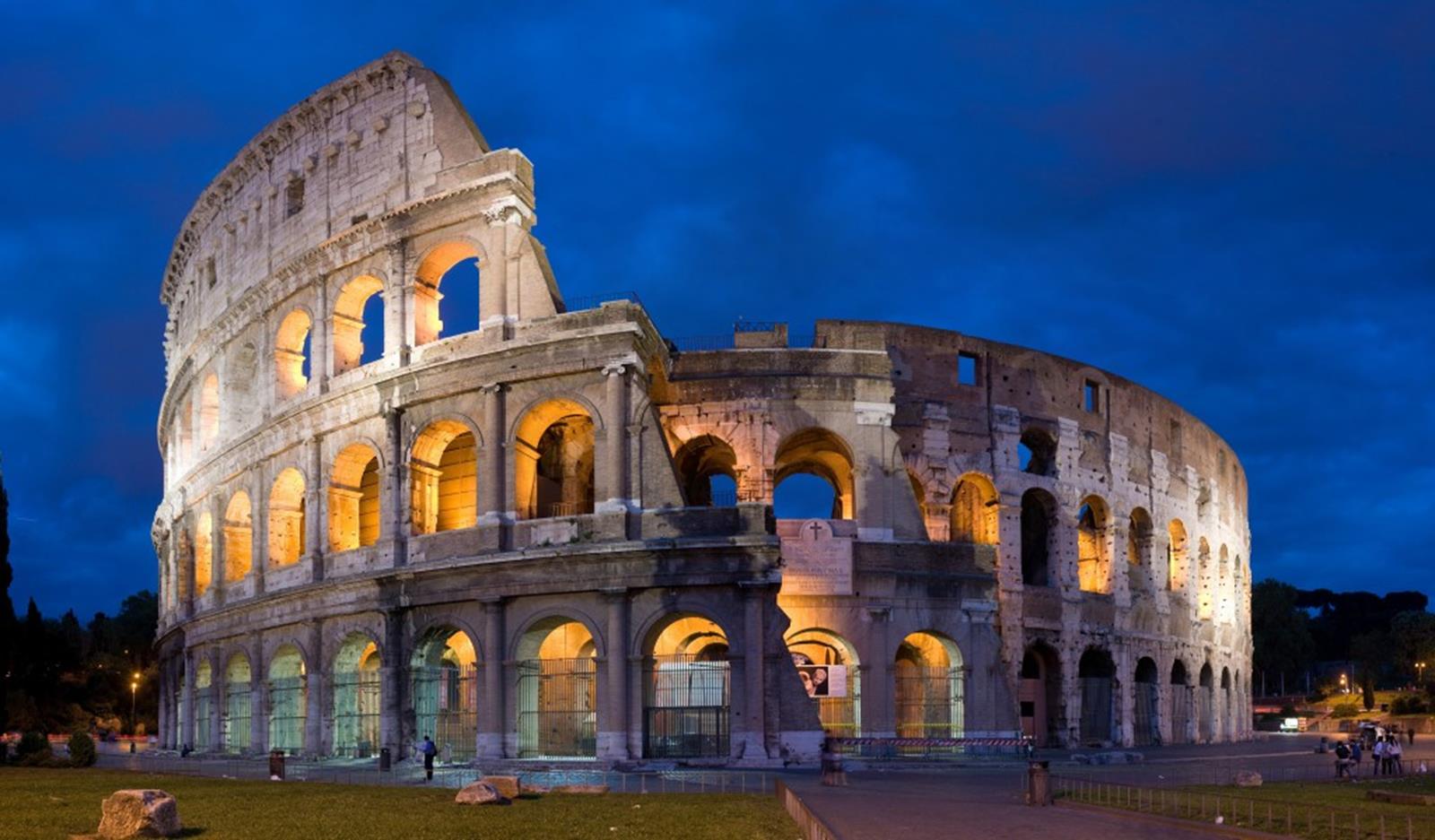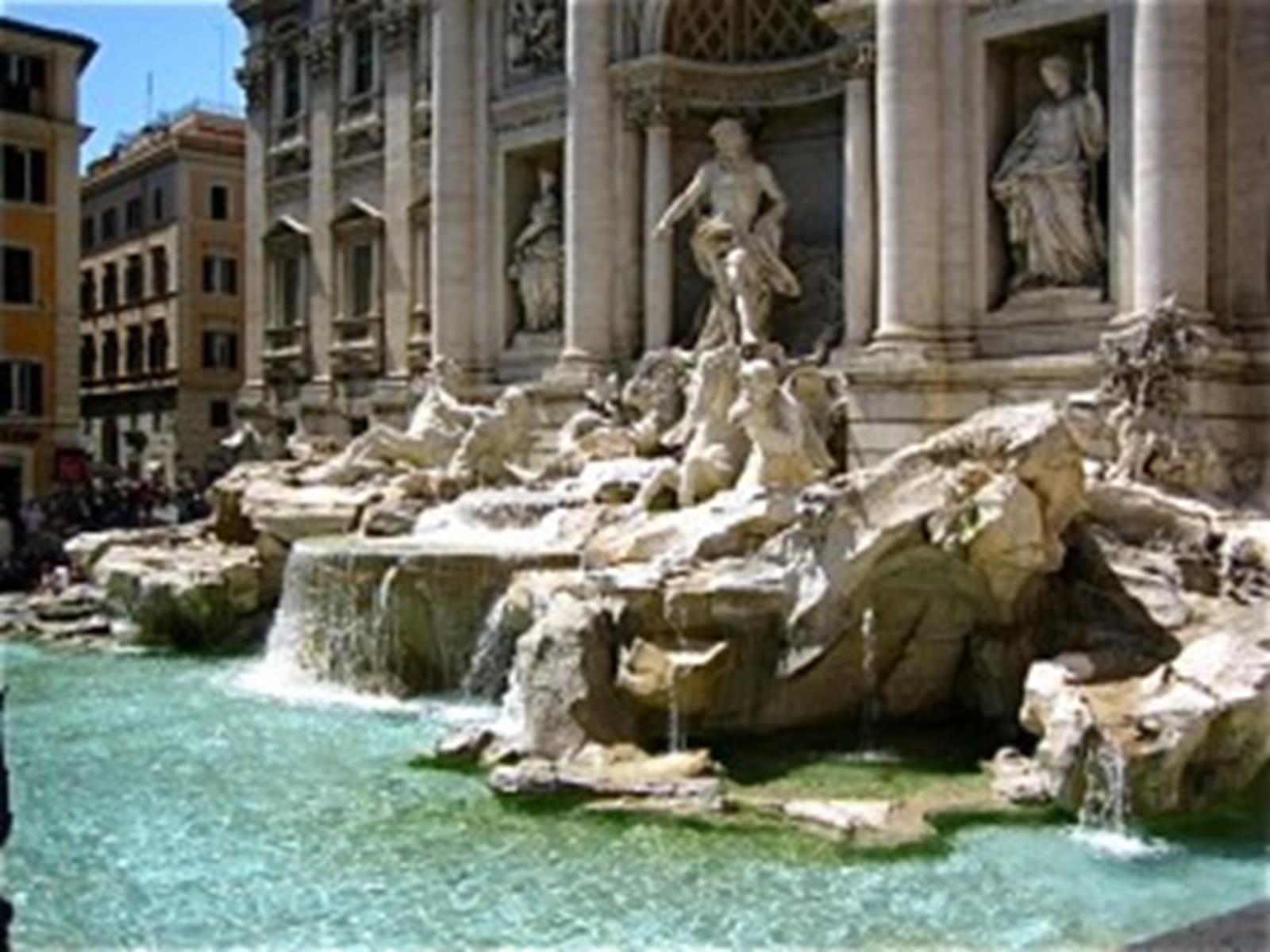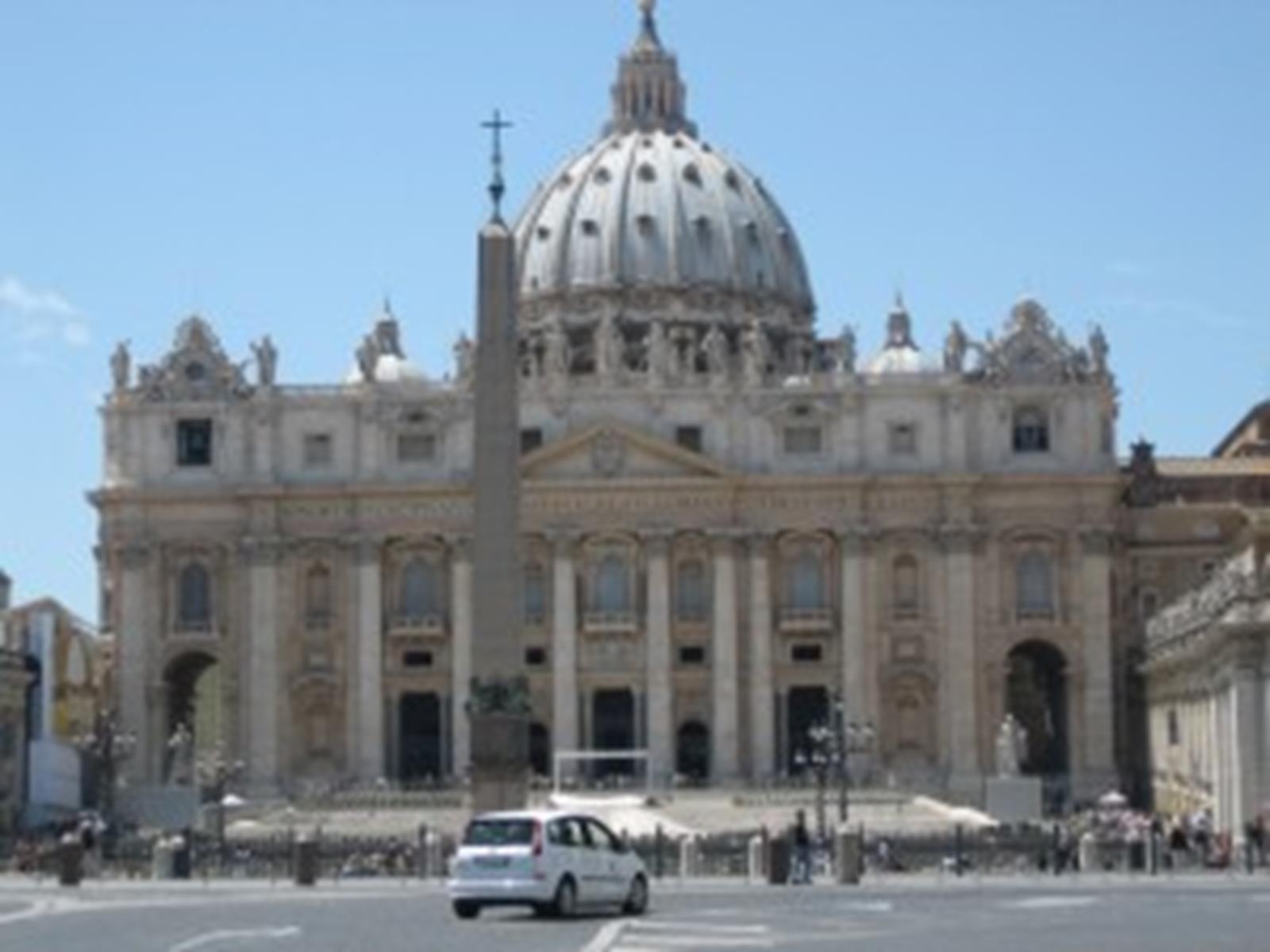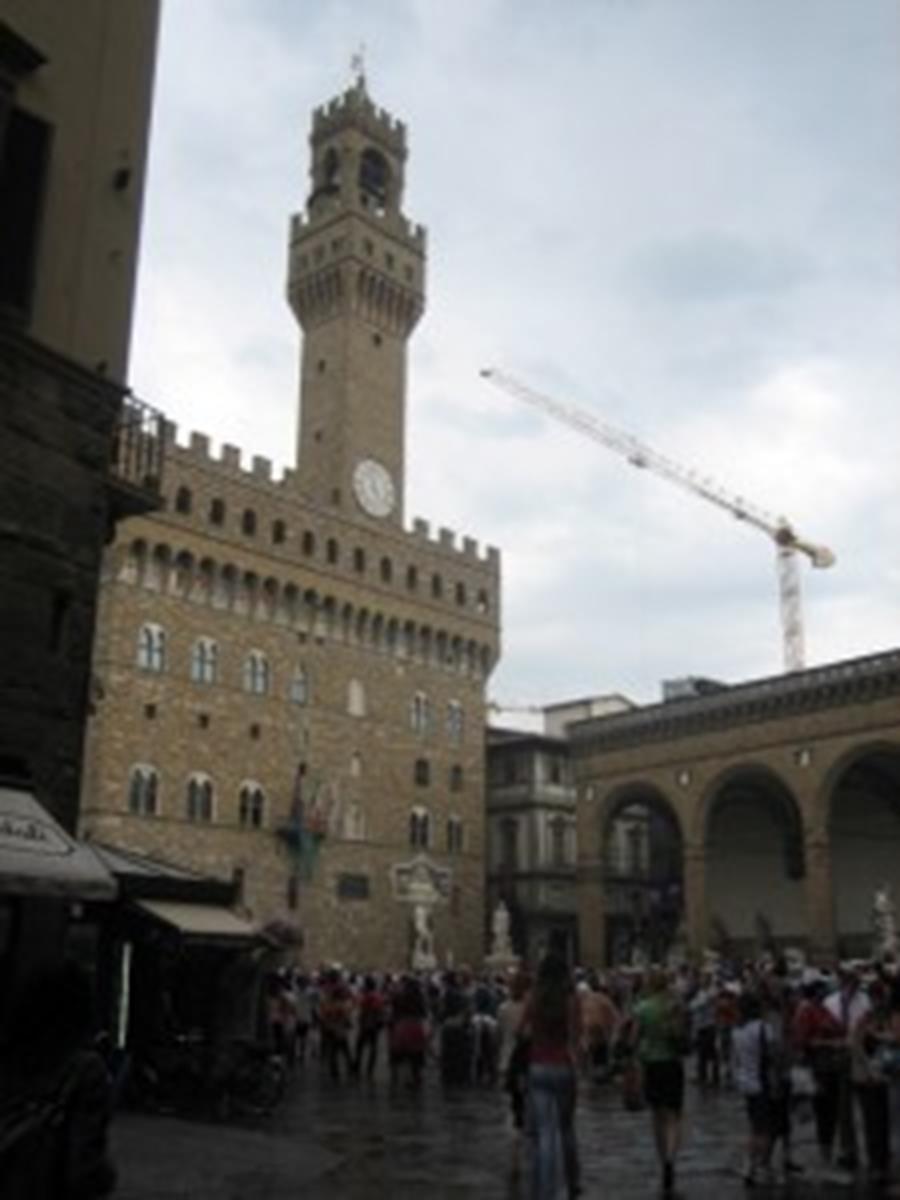Italy, located in Southern Europe, has a lot to offer student group travelers. There are hundreds of Italian cities that visitors can stumble upon, but if time is an issue, certain cities should be on the top of the list. Venice, Rome and Florence are essential to any trip to this culturally rich country filled with art and monuments of all kinds.
Once group travelers arrive in Italy, the smartest and most affordable means of transportation is the train. The Trenitalia system overlays more than 10,000 miles inside Italy and connects to other European countries. A Eurail Italy Pass allows visitors to take the train anywhere in the country, and special rates may apply for student groups.
When traveling to any new destination (especially a different country) and visiting the major tourist attractions within big cities like these, staying safe is a concern. Students need to stay close to the group and look out for one another in order to avoid the possibility of pickpockets and purse-snatchers. Keep an eye on each other’s bags and purses, make sure to put away any important papers or documents (like passports, money and ATM cards) and always be aware of your surroundings. It’s better to carry your backpack or purse in front of you where you can easily see it.
Student Performance Venues in Italy
If you’re traveling as a performing arts group, there is a variety of possibilities for performances in these three major cities in Italy. The venue options below have been used on group trips, but availability and booking depends on the tour company you’re traveling with.
In Venice, venue options include: the Basilica di San Marco as well as the piazza in front of the cathedral, Campo Santo Stefano, Church of San Stae, Chiesa dei Gesuati, Chiesa Santa Maria dei Miracoli and Il Redentore (a basilica along the Grand Canal).
In Rome, venue options include: singing mass in St. Peter’s Basilica, Trinitá dei Monti (at the top of the Spanish Steps), Church of Santa Maria del Popolo, San Lorenzo in Damaso, Basilica Santa Maria in Trastevere, Basilica di San Nicola in Carcere, Monestary Chapel of the American University of Rome, American Overseas School, U.S. Embassy in Vatican City and Piazza Navona.
In Florence, venues include: the Duomo, Church of Santi Apostoli, San Miniato al Ricci, Tempio Maggiore, Convent of Montedomini, San Miniato al Monte, American International School, St. James Church, United States Consulate, Tuscan American Association and Casa Di Riposo.
Venice for Student Groups
Located in the Veneto region and known as the “City of Bridges,” with more than 400 bridges, Venice is a labyrinth of alleyways, palaces, churches, squares and shops. The city extends across 117 smaller islands in the boggy Venetian Lagoon along the Adriatic Sea in Northeast Italy. Venice is one of Italy’s most-visited cities and can be explored for next to nothing if student travelers are frugal.
Getting Around Venice
The best way to arrive in Venice, if student travel groups don’t have their own planned transportation, is by train at the Venice Santa Lucia Train Station on the Northwest edge of the city. It is connected to the Grand Canal, one of the main water-traffic passageways in Venice. Public transportation ranges from water buses to water taxis and gondolas, but the most affordable are the water buses, known as vaporetti. The vaporetti ply the prime waterways or canals, go around the lagoon and visit the islands of Venice. The No.1 vaporetto runs up and down the Grand Canal, stopping at each of the six sestiere (or neighborhoods) Venice is split into. After arriving at the desired stop, touring by foot is the best way to see the sights as student group travelers can wander through the streets and alleyways to get there. A map and walking shoes are musts.
Venice Train Station: http://www.raileurope.com/europe-travel-guide/italy/venice/train-station/santa-lucia-train-station.html
Sights to See in Venice
Sightseeing is contingent on how long student group travelers plan on staying, but below are a few of the major sights that visitors shouldn’t miss.
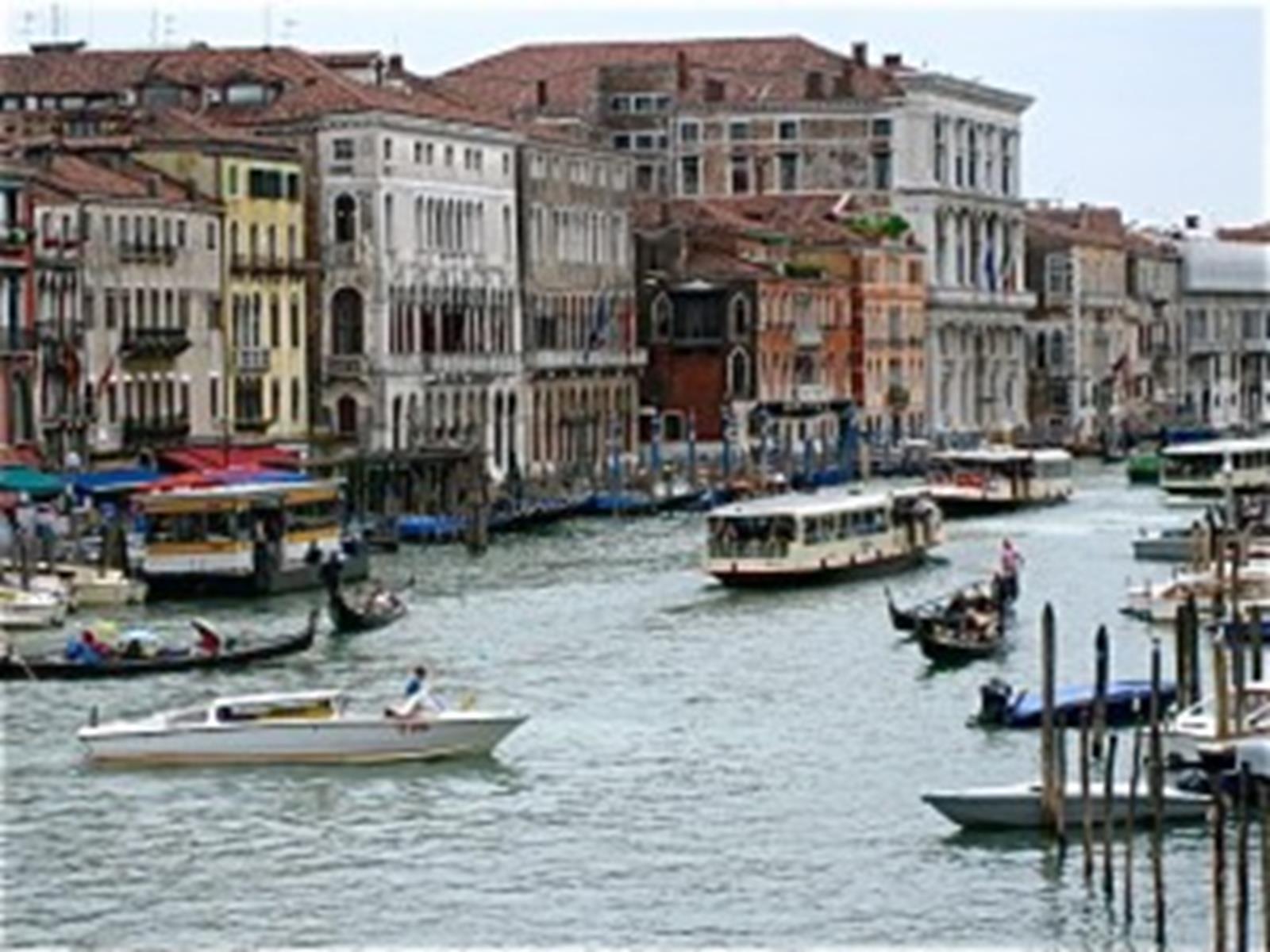
Venice’s Grand Canal forms a backwards “S” shape through the city and is one of the world’s great waterways.
The Grand Canal itself is one of Venice’s most significant sights, so student group travelers riding the vaporetti should make sure to take in the vast and extensive canal lined with more than 170 buildings dating back to the 13thcentury. Architectural styles include Venetian Gothic, Moorish, Venetian-Byzantine, Renaissance, Baroque and Neoclassical.
St. Mark’s Square contains some of the city’s major monuments. Here you’ll find St. Mark’s Basilica, an extraordinary architectural prize. Visitors will also see St. Mark’s Campanile, Venice’s famous 320-foot bell tower, and Doge’s Palace, originally the meeting
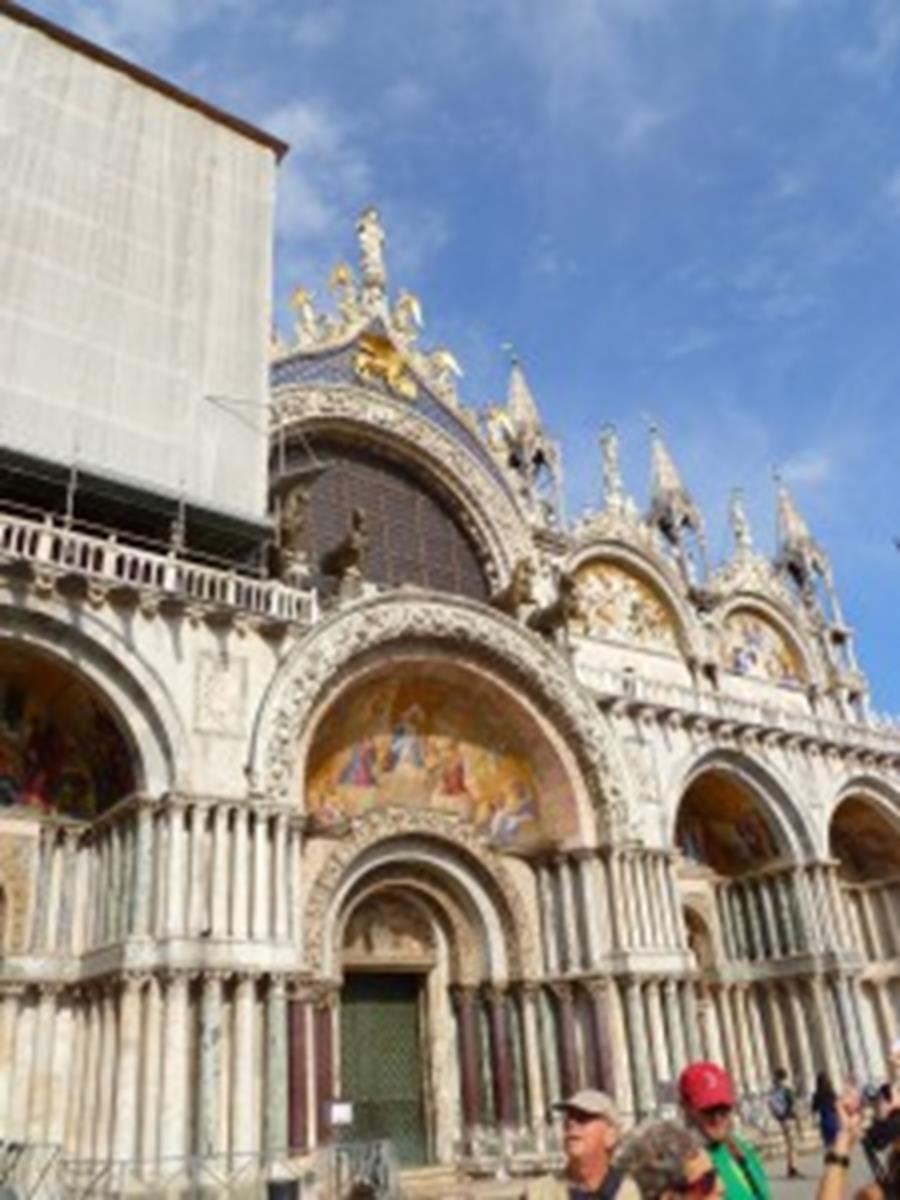
St. Mark’s Basilica, located in St. Mark’s Square, is about 205 ft. wide and adjoins one edge of the square.
place of the governing authorities that combines elements of Gothic, Moorish and Renaissance architecture. Inside is filled with paintings and sculptures by some of the most significant names of the Renaissance. St. Mark’s Clock Towerdisplays the time as well as solar and lunar phases used to estimate the tide. A number of other noteworthy buildings, sidewalk cafes and shops border the rest of the square. Visiting St. Mark’s Square is an ideal way to start out the Venice experience and is sure to captivate your group.
The Rialto Bridge is one of the stops along the No.1 vaporetti route and the most famous of the four bridges across the Grand Canal. The 24-foot stone arch contains three walkways, composed mostly of steps, with two along the outer balconies and a spacious, inner walkway leading through two rows of small shops that sell jewelry, Murano glass (a famous product from an island in the lagoon) and other items.
One of the world’s most famous museums is The Accademia, a 24-room museum of pre-19th century art showcasing the most remarkable Venetian artists. Tickets may be purchased online or upon arrival.
Some museums and churches have admission fees, so going inside may depend on the student group’s budget. The city offers discount cards called the Rolling Venice card and Chorus Card (for touring up to 16 churches in the area) that can cut costs of admission
Of course, shopping is a must and tasting the cuisines of the region is essential to the itinerary. Venice is known for its carnival masks, glassware and lace as well as its fresh seafood (like crab and cuttlefish) and vegetables from the islands of the lagoon.
Now it’s time to hop on the Italian Rail and head to the capital of Italy and the country’s largest city.
Rome for Student Groups
With more than 2.7 million residents, Rome, located in the Lazio region, can be overwhelming. Rome, the center of the ancient world’s greatest empire, is known as the “Eternal City.” Although extensive, it’s a magnificent and exciting place to explore. The city is so crowded with sights that it’s inconceivable to take them all in.
Getting Around Rome
Arriving in Rome by train would be the top choice since the city’s main train station, the Roma Termini Train Station, is located in the heart of the city. It houses an information center, travel agencies, restaurants, banks and a pharmacy. A train from Rome’s main airport, Leonardo da Vinci Airport, runs every 30 minutes into Termini.
Rome’s Train Station: http://www.raileurope.com/europe-travel-guide/italy/rome/train-station/termini-train-station.html
An affordable way to see most sights in a short period of time is the ever-popular “hop-on, hop-off” sightseeing buses, which take visitors to the main attractions in Rome on a double-decker bus that leaves each location every 10 minutes. Tickets can be purchased at the Termini and group rates are available. Other public transportation options are the Metropolitana (metro) subway, city buses, trams and taxis. The metro is cheap but crowded and doesn’t directly go to all of the major attractions.
Prime Spots to Visit in Rome
Below are just a handful of the sights to see in Rome:
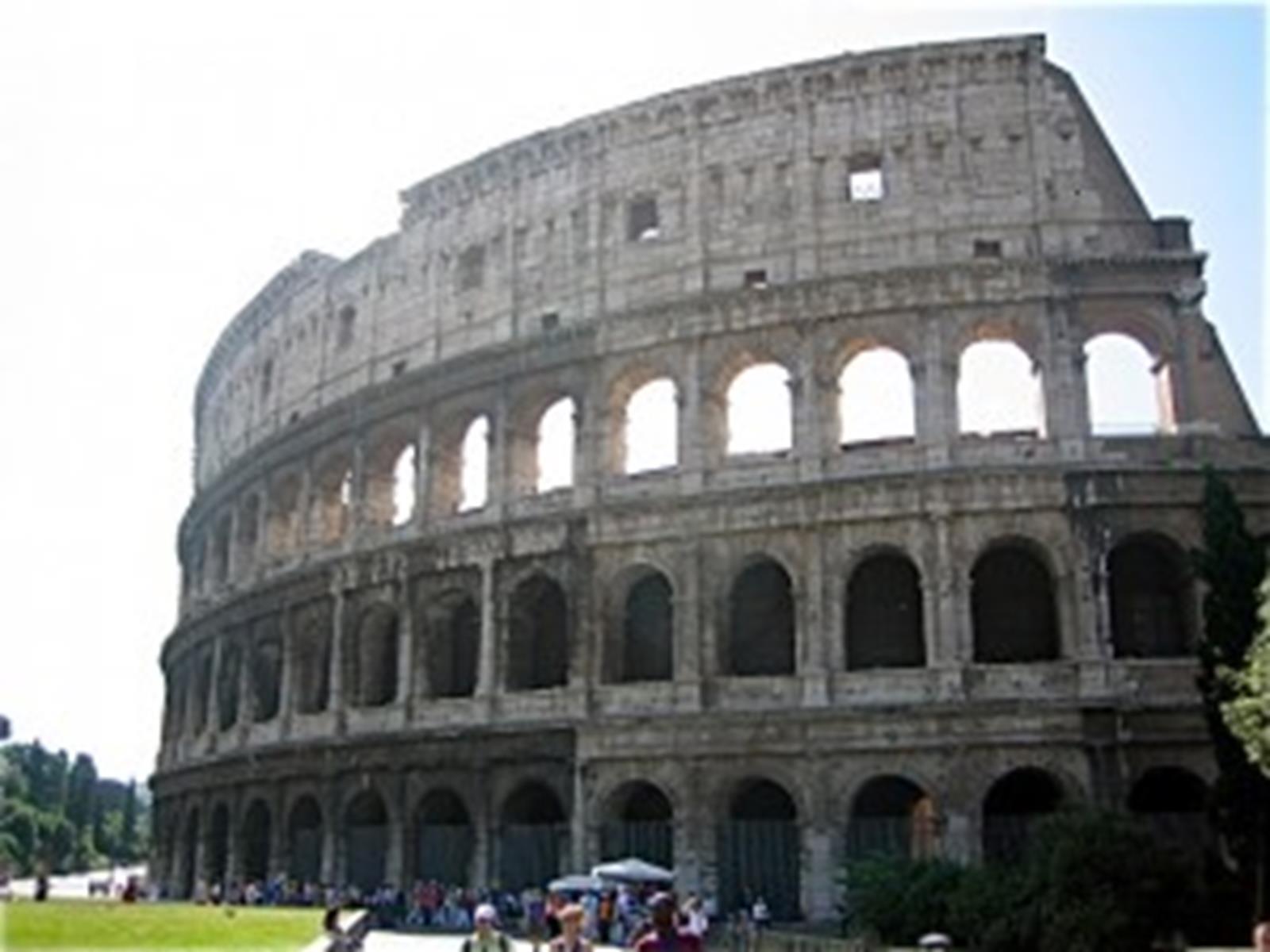
Once inside the Colosseum, visitors will have the ability to walk around the outer ring of the structure and look down into uncovered aisles under what was once the arena floor.
The Colosseum, the symbol of Rome, is a necessary stop on any visit to the city. The oval-shaped amphitheater is deemed one of the greatest works of Roman architecture and engineering. The arena’s 573-yard perimeter held more than 70,000 onlookers the day it opened in 80 AD. Visitors should expect a crowd at the Colosseum with long lines at the entrance and people dressed as gladiators charging a pricey fee to pose for pictures.
The Pantheon is one of Rome’s most well preserved ancient monuments. Originally a temple, it was later transformed into a Christian church and houses tombs of prominent Italians such as the artist Raphael. The building is massive-142 feet wide and 142 feet high – with the largest concrete dome ever made. The oculus, the opening of the dome, provides natural light and represents the “Eye of Heaven.” Visitors entering through the original 20-ton bronze doors can explore the various statues, tombs and Gothic murals.
Students will be able to see Rome from an amazing angle at the top of the Spanish Steps. Visitors can climb the famous staircase from the base, known as the Piazza di Spagna, to the top, called the Piazza Trinitá dei Monti. Before climbing the stairs make sure to notice the early Baroque fountain called the Fountain of the Old Boat. With 138 steps, visitors will definitely get a workout as they climb the staircase, a gift from the French in 1725.
After the climb down the Spanish Steps, follow the powerful sound of trickling water and join the numerous visitors and locals taking in the beauty of the Trevi Fountain. The Trevi is one of the most famous fountains in the world and the largest Baroque fountain in the city. Its ornate display of mythological seahorses and other elaborate stone carvings is a must to see. Everyone should throw a coin into the fountain – legend says if you toss a coin over your shoulder, with your back to the fountain, you will eventually return to Rome.
Although crowded with tourists, group travelers will find peace among the chaos while touring Vatican City. When visiting St. Peter’s Square travelers will find themselves in the large public square directly in front of St. Peter’s Basilica, the largest church in Christendom. The square is round, bordered by two large Tuscan colonnades, and was designed so that the greatest number of people could see the Pope give his blessing. On the top of the colonnades are 140 statues of saints. St. Peter’s, with a dome soaring 435 feet, is the burial site of one of the 12 apostles, St. Peter. The line is usually very long. Students also should visit the Vatican Museums, which contain masterpieces of sculpture, painting and other art collected by the popes and Roman Catholic Church over the centuries. The most well-known and significant masterpiece is the Sistine Chapel, but visitors shouldn’t miss the sculpture museums, Raphael Rooms, Egyptian collection and Picture Gallery.
Hungry after all the sightseeing? A tasty treat to try in the city is gelato or Italian ice cream, which is around almost every corner in some areas. If students have some extra money to spend, shopping in Rome is popular; head to the city’s most famous shopping district, Piazza di Spagna.
Florence for Student Groups
Student group travelers arriving in Florence, the capital city of the region of Tuscany, are thrown into what seems like one grandiose museum. Florence abounds with such a rich array of architecture and art that, to some, the metropolis is one big art gallery. It will be a crowded visit because Florence is a Mecca for tourists, but the city is easy to navigate and most attractions are within walking distance from the historic center.
Transportation in Florence
Florence is easy to reach by train as it has various railway stations. It’s on the primary Italian train route that connects to most European capitals and Rome. The main railway station is Santa Maria Novella Train Station, located in the historical center of Florence. Public transportation is on buses and taxis and, for daring travelers, bicycles and mopeds may be rented. An easier and more reasonable means of getting around is by foot, taking in the city’s rich history at every glance.
Florence Train Station: http://www.raileurope.com/europe-travel-guide/italy/florence/train-station/santa-maria-novella-train-station.html
Florence’s Main Attractions
Here are some recommendations for student group travelers touring Florence:

Florence’s Duomo was ultimately completed in 1887. If willing, visitors can climb the 463 steps to the top of the dome for an amazing view of the city.
In the heart of the historic center is the Piazza del Duomo, the true hub of Florence where travelers come to see Giotto’s Bell Tower, designed by Giotto with polychrome marble and unique reliefs. The bell tower faces Duomo, or the Cathedral of Santa Maria del Fiore, Florence’s greatest masterpiece. The Duomo matches the bell tower with its multicolored marble and intricate 19th century Gothic Revival exterior. The dome, which weighs 37,000 tons and uses four million bricks, was a major architectural feat in the early 1400s. Student groups should absolutely take the time to go inside (shoulders must be covered and no hats allowed) and see the many paintings and frescoes. Nearby is the Florence Baptistery, one of Florence’s oldest buildings. The octagon-shaped building, inside and outside, exhibits the Italian Romanesque style and medieval and Renaissance decorations. The Baptistery is known for its bronzed doors, carved with depictions from the Bible. Inside are marble walls and floors with geometric patterns, designs and an overpowering and complex mosaic ceiling. These three sights are known as the “cathedral complex.”
The distinguished Uffizi Gallery is one of the most popular art museums in the Western world, covering nearly every art movement in Italy. The U-shaped building contains 45 rooms where paintings are placed in sequential order from the 13th to the 18th centuries. Near the Uffizi is Florence’s science museum, Museo Galileo, named after the acclaimed scientist. It houses the only remaining tools designed and built by Galileo as well as interactive video guides and cutting-edge display cases. Another museum that groups would be interested in visiting is The Accademia, which holds Michelangelo’s David statue. If your group misses visiting The Accademia, there is a copy of the statue in Piazza della Signoria, site of the Palazzo Vecchio, Florence’s town hall. On the corner of the square is a gallery of statues called the Loggia dei Lanzi, with wide arches open to the street.
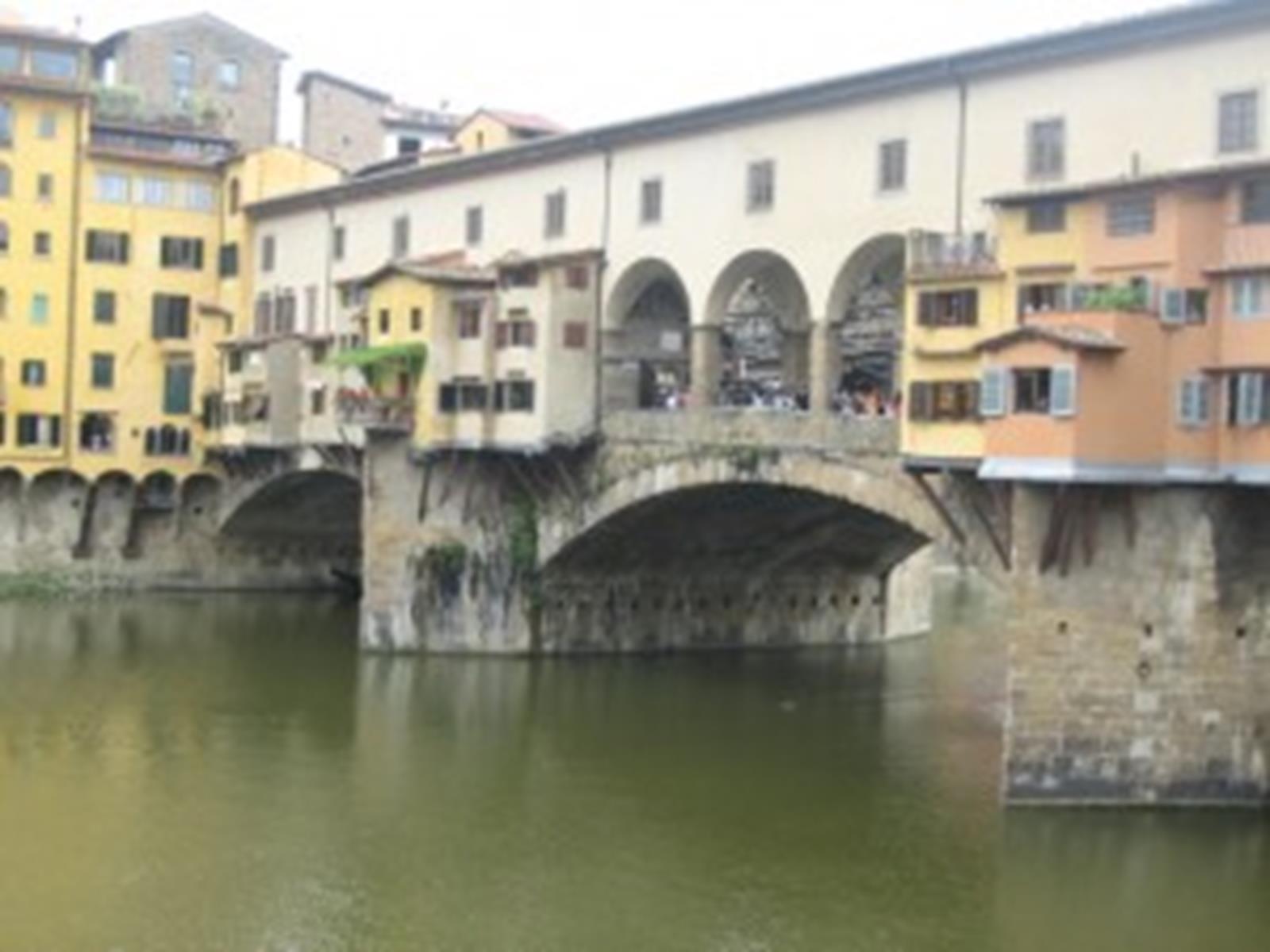
Ponte Vecchio (“Old Bridge”) was built in 1345 to replace an earlier bridge that was swept away by a flood.
A popular bridge in Florence is the Ponte Vecchio, translated as “Old Bridge,” which crosses over the Arno River. The medieval bridge has shops for travelers to peruse, and it’s a great location for a photo-op.
There is much more to see than just the attractions mentioned above. Student group travelers should make sure to take the time to search through a guidebook and discover additional sites to see in this historical city. There are many more museums, palaces, parks and gardens to visit.


